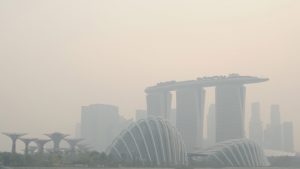Q1. From personal experience, state whether these processes are endothermic or exothermic. Give a reason for each.
a. A charcoal briquette burns.
Exothermic. Heat is being released when the charcoal briquette burns.
b. Water evaporates from your skin.
Endothermic. Water absorbs heat for evaporation.
c. Ice melts.
Endothermic. Ice absorbs heat to melt.
Q2. Chemical explosions are very exothermic reactions. Describe the relative bond strengths in the reactants and products that would make for a good explosion.
The bond energies of the products have to be larger than the bond energies of the reactants to result in an exothermic reaction, which would then make for a good explosion.
Q3. How might you explain the difference between temperature and heat to a friend? Use some practical, everyday examples.
Heat is a form of energy and it flows from a warmer body to a colder body. Temperature is a measurement that indicates the direction of heat flow. For example, when a cup of hot water is poured into a cup of cold water, the heat will flow from the hot water to the cold water and the resulting temperature is a mixture of both.
Q4. A premium gasoline available at most stations has an octane rating of 98. What does that tell you about:
a. knocking characteristics of this gasoline?
Gasoline with an octane rating of 98 has the same knocking characteristics as a mixture composed of 98% isooctane and 2% n-heptane and is more resistant to knocking than other blends sold at stations.
b. whether the fuel contains oxygenates?
No, it does not tell us whether the fuel contains oxygenates.


